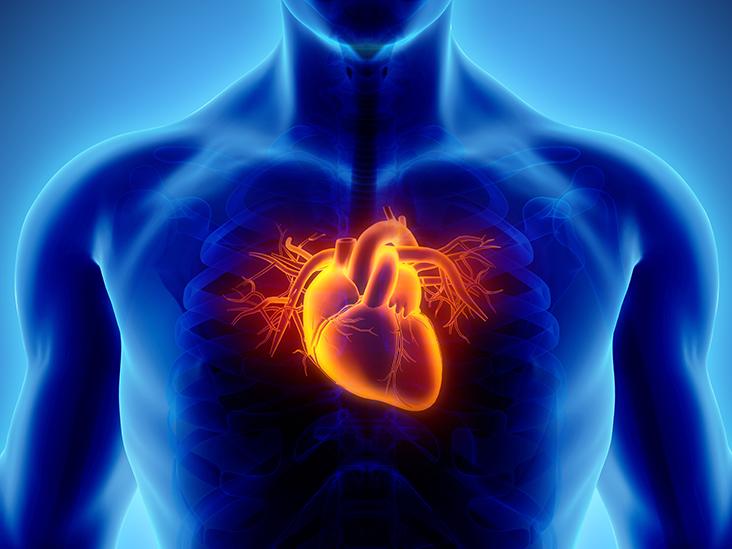Of all the health problems and illnesses you need to think about, one of the most significant is the protection of your heart. An unstable heart can be the first sign of heart disease— a condition that according to the CDC is the leading cause of death in America. Coronary Artery Disease is among the most common types of heart diseases.
What We'll Cover
Coronary artery disease (CAD) is one of the most life-threatening forms of heart disease. CAD is responsible for taking over 370,000 lives a year and it’s hard to stop. Individuals also don’t know that they have CAD until they’ve suffered a heart attack.
Sadly, failing to know that you have CAD could be fatal before a heart attack occurs. There are other methods of assessing whether or not you are dealing with CAD before a heart attack occurs, or actually at risk of getting CAD.
What Causes Coronary Artery Disease?
Coronary artery disease begins in the arteries. Plaque builds up in artery walls, which in turn affects blood to the heart.
The plaque is produced by cholesterol or by other substances. The buildup can become so large over time, that the arteries become narrower. This can block blood flow either partially or completely, according to CDC reports. The problem is this ensures that your body’s most essential arteries can’t carry blood, oxygen or vital nutrients to your organs.
There are a few factors which threaten you with CAD. The CDC states that all of these increases your chances of developing CAD: becoming overweight or obese.
- Inactivity, or a lack of exercise and physical activity.
- Poor eating habits.
- Cigarette smoke.
- A family history of cardiac disease.
- Diabetes or insulin resistance
- High cholesterol
- High blood pressure
Fortunately, if you are conscious of the CAD signs and symptoms, you may be able to avoid a blockage from occurring. And this may avoid a heart attack, or other serious heart problems.
Symptoms
A heart attack is not necessarily the only CAD symptom you may have. There are ways to determine whether you will have CAD or not— before your life is at risk.
The involvement of coronary artery disease can not initially give off any significant symptoms. By realizing the plaque is building up inside your arteries, you might lead a perfectly normal life. Nevertheless, CAD may begin to display signs and symptoms as the plaque becomes an increasingly bigger problem.
The Mayo Clinic suggests searching for the following specific symptoms that may be a sign of CAD:
Angina
CAD may be accompanied by chest pain, discomfort or tightness. This discomfort is also called angina and it will make you feel like something heavy is on top of your chest. This can occur in any area of the chest, and it’s often triggered by stress. If you are under physical or emotional stress, pain may be transient, or appear and disappear.
Angina can also cause other symptoms, including indigestion, heartburn, vomiting, cramping, or nausea.
Shortness of Breath
You can be ending up feeling shortness of breath as the heart fails to pump blood. This is a sign of what your heart is dealing with, possibly along with other organs. When doing physical exercises, you may be struggling to breathe, or you may feel exhausted or out of breath while exerting yourself. You need to keep a lookout.
Heart Attack
Heart attacks are a common symptom of CAD— which occur when an artery is blocked entirely. Symptoms such as chest pressure, pain on one side of the back or neck, shortness of breath, and sweating are likely to occur. Heart attacks can happen without signs or symptoms, so pay careful attention to how you feel.
What to do if you have any symptoms
When you experience any of the coronary artery disease related signs or symptoms, it is important to see your doctor as soon as possible. Your doctor will check for CAD and identify the root cause of your problems.
When CAD is left untreated it can cause all kinds of problems. The Mayo Clinic notes that CAD can lead to conditions such as: Angina (chest pain), Heart Attack, Heart Failure, Abnormal heart rhythm (arrhythmia). But if you can detect CAD before it leads to severe complications, you will be able to control the disease. And this could save your life.
There is no cure for CAD, but this is, however, a disease that can be controlled. Doctors typically prescribe medicines to help lower the risk or effects of CAD. If the arteries are too small or blocked, surgery is a choice too.
But physicians usually prescribe improvements in lifestyle above all else. Changing your habits will help prevent CAD of losing healthy arteries or control better the disease. It typically includes reducing or removing risk factors by weight loss, healthy eating, and becoming physically active.
When you are concerned about coronary artery disease, it is crucial to identify it. You should discuss your risk level with your doctor and if appropriate, you can make lifestyle changes now to avoid or delay CAD progression.
The responses below are not provided, commissioned, reviewed, approved, or otherwise endorsed by any financial entity or advertiser. It is not the advertiser’s responsibility to ensure all posts and/or questions are answered.





